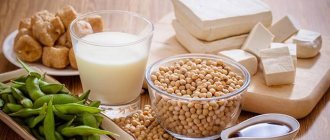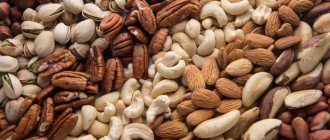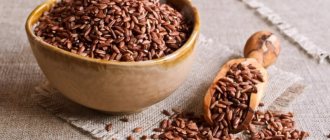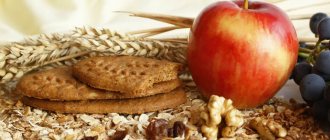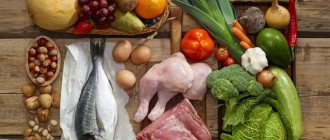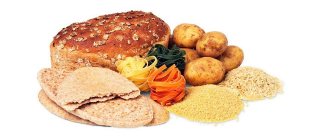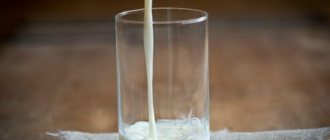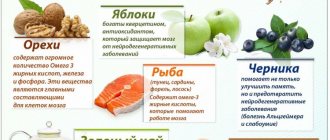Fiber and bran: are they the same thing or not?
Those who try to lead a healthy lifestyle and eat right know how important dietary fiber is for the body. Their main sources, fiber and bran, are considered by many to be one and the same product.
But this opinion is wrong. Both ingredients are extracted from plants and provide similar benefits to the body, but there are differences between them. Fiber is just one of the components of bran.
What is fiber
Cellulose is a polysaccharide. In its purified form, it is a carbohydrate without any foreign impurities. However, in practice it is not so highly refined, so it contains other compounds (proteins, fatty acids) in small quantities.
The substance is included in the group of dietary fibers, since a significant part of it is not absorbed by the body. Only a small proportion of cellulose derivatives (soluble fiber) is broken down.
The main benefits of dietary fiber:
- activation of intestinal function;
- cleansing the body of waste and toxins;
- reducing the feeling of hunger due to swelling in the stomach.
These substances are found in all plants in varying quantities. Cereals and legumes, vegetables, herbs, fruits are rich in them, and they are also found in nuts.
About the concept of “fiber”
This is usually the name given to those parts of food that are not digested in the human stomach, but are processed by the microflora of his intestines . This is simply dietary fiber that is found in our food. Often indigestible in the stomach and intestines of people, dietary fiber is characterized as molecules of polymeric carbohydrates such as starch and cellulose, combined with lignin, the main substance of the woody cell walls of some plants. Fiber is present in plant foods.
So, 100 grams of different foods contain different amounts of fiber:
- In grain bread – 6.1 g.
- In premium wheat bread – 2.8 g.
- In wheat bran – 43.0 g.
- In buckwheat porridge – 2.7 g.
- In oatmeal – 1.9 g.
- In nuts – 4.0 g.
- In dried apricots – 18 g.
It has proven itself as a component of many nutritional supplements for maintaining good physical shape and optimal weight. A number of specialized international organizations have approved its use in nutrition.
Fiber is distinguished according to various characteristics:
- It can be made from fibers of cereals and legumes, vegetables, cereal stems, herbs, wood, etc.
- Fiber can be isolated from raw materials, unrefined, purified in neutral or acidic environments, and with the help of enzymes.
- Plant fibers can be water-soluble or insoluble.
- They may undergo microbial fermentation in the rectum completely or partially, or not be fermented at all.
Plant fibers have no energy value. There are no nutrients or minerals in it. Despite their indigestibility and indigestibility, it is thanks to fiber that normal digestion is ensured, weight is reduced, and diseases are prevented. Any fresh fruits and vegetables are a source of fiber. Water-soluble fiber is found in nuts, oats, beans, citrus fruits and berries. Most vegetables and bran contain insoluble fiber. Both types are found in soybeans.
In order for a person to meet the 25-gram daily fiber requirement, he needs to eat two and a half kilograms of white cabbage, a kilogram of oatmeal and half a kilogram of beans every day. Therefore, with the help of modern technologies, the production of special bread with the maximum amount of such fibers has been established. One hundred grams of them contain the daily requirement for fiber. Fiber has a positive effect on the health of the body and the prevention of diseases, in particular it:
- Significantly reduces blood sugar and prevents the development of diabetes.
- Reduces cholesterol levels, thereby reducing the risk of heart and vascular diseases.
- Helps normalize the composition of microflora and prevent digestive disorders.
- Promotes functional restoration of the intestine during inflammation.
- Eating fiber foods daily helps prevent colorectal cancer.
A reasonable diet containing plant fibers has a significant effect on the health of the body, cleansing, stimulating and improving the digestive system. Nutritionists believe that in this sense, bran is of greatest value. American scientists have scientifically proven that increasing fiber consumption by a third normalizes weight and helps overcome obesity.
What is the difference between fiber and bran?
Many plants can be a source of fiber; it is included in a large list of products, including as a thickener, and is sold as a dietary supplement and for weight loss.
Bran is made from grain, it is sold in its pure form or enriched baked goods and cereals. They are not found in other foods.
Well-purified cellulose will have an energy value of about 40 kcal per 100g. But supplements with a calorie content of 150-170 kcal are more often found on sale.
Crushed shells with germ are a complex of compounds; they always contain protein and fats in varying quantities, which depends on the raw material. Therefore, their calorie content per 100 g is higher and is approximately 250 kcal for wheat and 350 kcal for oatmeal.
This is a more nutritious and valuable component. The “waste” from flour production includes up to 80% fiber, so to achieve an effect on dietary fiber, you need to eat more of it.
The main common property of these food additives is that they swell in water, increase in size and create a feeling of fullness. In addition, as sorbents, they remove cholesterol and many harmful substances from the body. But bran is also a supplier of nutrients.
What is bran?
Bran is a by-product (waste) that is obtained during the production of flour. Essentially, these are the grain shells and the germ. Their presence in flour can affect the quality of baked products - if there is a lot of them in the flour, the digestibility of the bread decreases, and if there is a small amount, the taste of the bread improves. Bran contains a lot of fiber, but also contains:
- saccharides - 60–80%;
- fats - 3%;
- proteins - 15–20%;
- vitamins and minerals.
Bran is a complex of useful substances, many of which are completely absorbed by the human body. It is impossible to get them from vegetables, only from seeds and grains.
For a long time, bran and its beneficial properties were ignored; it was believed that they were only suitable for feeding farm animals. But now this by-product of the flour milling industry is at a premium. Oat bran has become a staple breakfast component for those who want to lose extra pounds. Once in the stomach, they increase in volume, so the feeling of fullness remains for a long time. Vegetarians also love them.
In addition, bran has the ability to absorb and remove salts of heavy metals, radionuclides, toxins, cholesterol, and so on. Toxic substances simply cannot gain a foothold in the body. It is known that after a few days of regular use, constipation disappears, this is due to the fact that bran is a nutrient for beneficial intestinal microflora.
As a result of use:
- digestion improves;
- well-being is normalized;
- spring appearance improves;
- metabolism returns to normal;
- immunity is strengthened;
- blood sugar levels decrease.
Which bran has the most fiber?
The cellulose content in grain shells varies greatly depending on the raw materials from which they are obtained and ranges from 15 to 80%. Wheat ones are optimal for several reasons.
This is the most common option. They have a rich composition, include many B vitamins, and are easy to digest.
The record holders for carbohydrate content are the by-products of corn processing, but you shouldn’t buy flax for these substances: they simply aren’t there.
How much fiber is in bran by type is presented in the table:
| Variety of grain hulls | Dietary fiber, g per 100 g | Dietary fiber in 1 tablespoon (15 g) |
| Corn | 80 | 12 |
| Rye | 45 | 6,8 |
| Wheat | 43-45 | 6,5-6,8 |
| Rice | 20 | 3 |
| Oatmeal | 15 | 2,3 |
| Linen | Do not contain | Do not contain |
1 tablespoon contains approximately 15 g of bran. The exact weight depends on their degree of grinding (12 g for coarse and up to 20 g for fine).
14-20: Fruits and berries
| The product's name | Fiber content per 100g | Percentage of daily requirement |
| Apricot | 2.1 g | 7% |
| Avocado | 6.7 g | 22% |
| Quince | 3.6 g | 12% |
| Cherry plum | 1.8 g | 6% |
| A pineapple | 1.2 g | 4% |
| Orange | 2.2 g | 7% |
| Watermelon | 0.4 g | 1% |
| Banana | 1.7 g | 6% |
| Cowberry | 2.5 g | 8% |
| Grape | 1.6 g | 5% |
| Cherry | 1.8 g | 6% |
| Blueberry | 2.5 g | 8% |
| Pomegranate | 0.9 g | 3% |
| Grapefruit | 1.8 g | 6% |
| Pear | 2.8 g | 9% |
| Dried pear | 6 g | 20% |
| Durian | 3.8 g | 13% |
| Melon | 0.9 g | 3% |
| Blackberry | 2.9 g | 10% |
| Strawberries | 2.2 g | 7% |
| Raisin | 9.6 g | 32% |
| Fresh figs | 2.5 g | 8% |
| Dried figs | 18.2 g | 61% |
| Kiwi | 3.8 g | 13% |
| Cranberry | 3.3 g | 11% |
| Gooseberry | 3.4 g | 11% |
| Dried apricots | 18 g | 60% |
| Lemon | 2 g | 7% |
| Raspberries | 3.7 g | 12% |
| Mango | 1.6 g | 5% |
| Mandarin | 1.9 g | 6% |
| Cloudberry | 6.3 g | 21% |
| Nectarine | 1.7 g | 6% |
| Sea buckthorn | 2 g | 7% |
| Papaya | 1.7 g | 6% |
| Peach | 2.1 g | 7% |
| Dried peach | 14.9 g | 50% |
| Pomelo | 1 g | 3% |
| Red rowan | 5.4 g | 18% |
| Rowan chokeberry | 4.1 g | 14% |
| Plum | 1.5 g | 5% |
| White currant | 3.4 g | 11% |
| Red currants | 3.4 g | 11% |
| Black currant | 4.8 g | 16% |
| Dried apricots | 17.6 g | 59% |
| Feijoa | 6.4 g | 21% |
| Dates | 6 g | 20% |
| Persimmon | 1.6 g | 5% |
| Cherries | 1.1 g | 4% |
| Blueberry | 3.1 g | 10% |
| Prunes | 9 g | 30% |
| Rose hip | 10.8 g | 36% |
| Apples | 1.8 g | 6% |
| Dried apples | 14.9 g | 50% |
Significant amounts of dietary fiber can be obtained from most fruits and berries that grow on all continents of the globe. Some representatives are leaders in dietary fiber content.
Avocado (9.2%)
Fiber: 9.2 grams per 100 grams or 18.4 grams per medium-sized avocado.
The fruit contains over 20 vitamins and minerals. Particularly important: folic and ascorbic acids, potassium, copper, tocopherol
Important importance is given to polyunsaturated fats, which occupy up to 30% of the volume of the fetus
Avocado helps reduce total cholesterol and bring its individual fractions to proper values, prevents the development of diabetes mellitus and atherosclerosis of large arteries.
Pear (5.5%)
Pear goes well with any desserts; it contains a lot of fructose (it does not require insulin for absorption), folic acid, vitamins C and A.
Pear is recommended for consumption in the presence of various diseases of the pancreas; it has a beneficial effect on the general condition of obesity and diabetes.
Apple (5.4%)
Fiber: 5.4 grams per 100 grams or 9.72 grams per medium-sized apple.
It is recommended to consume the fruit with the peel, since it contains most of the dietary fiber.
Systematic addition of apples to the diet has a beneficial effect on the health of the digestive system and helps prevent the development of atherosclerosis and cancer.
Raspberry (4.0%)
Fiber: 4.0 grams per 100 grams.
Adding fresh raspberries to various salads prevents the appearance of malignant tumors and improves the health of the skin.
Fiber: 3.4 grams per 100 grams.
Orange (3.4%)
Fiber: 3.4 grams per 100 grams or 5.1 grams per medium-sized orange.
Orange is a unique and extremely healthy fruit. It contains: vitamins (B1, B2, B5, B5, C, PP, A), micro- and macroelements (potassium, calcium, magnesium, iron, phosphorus and sodium).
The product accelerates the motor activity of the digestive tract, prevents the processes of fermentation and decay of chyme, helps strengthen general immunity and reduce cholesterol in the blood plasma. Consumption of orange reduces the risk of sudden vascular mortality by 1.5 times.
Banana (2.6%)
Bananas contain a lot of vitamin C, potassium and magnesium.
It is recommended to replace snacks with this fruit or add it to fruit salads. Banana improves neuromuscular transmission of impulses and improves blood supply to the brain.
Raspberry (4.0%)
The berry has a significant range of antioxidant components. Raspberries contain a large amount of vitamins C and K.
Which is healthier?
It all depends on what goals a person pursues:
- If you need to saturate your body with nutritional components, then it is definitely better to purchase bran. With a stable weight, they can be included in baked goods, added to porridge, and prepared in cocktails. From a nutritional point of view, this product is much healthier.
- If the main goal is cleansing the intestines and losing weight, then you should give preference to fiber. It is lower in calories and needs to be eaten in smaller quantities.
You can first practice a diet using cellulose, and after getting rid of extra pounds, switch to eating crushed shells.
What are the benefits of fiber?
Fiber has a positive effect on human health, in particular:
- Prevents the development of diabetes and lowers blood sugar levels.
- Reduces the level of bad cholesterol, thereby reducing the risk of developing cardiovascular pathologies.
- Normalizes intestinal microflora, improves digestion.
- Restores intestinal functions, stops inflammatory processes in it.
- Reduces the risk of developing rectal cancer with regular use.
What's best for losing weight?
To lose weight, you should choose pure fiber. It should be introduced into the diet in small portions, constantly increasing the amount to 25 g per day.
There is no need to chew it dry. The substance is mixed with water, kefir or juices. It can be added to soups and porridges.
Read more about how to take fiber for weight loss by following the link.
The benefits of oat bran fiber for the female and male body
A large amount of vitamins B1 and B2, as well as polyunsaturated acids Omega-3 and Omega-6, in oat bran fiber, normalize the balance of estrogen in the body of women. Therefore, its consumption as food is a powerful preventive measure and treatment for breast cancer, uterine fibroids and other “female” diseases.
The introduction of oat bran fiber, rich in vitamin E (vitamin of youth), into the diet will help men renew their potency and maintain “male” strength for many years.
How to take bran
Due to the presence of coarse fibers, grain shells stimulate the intestines, they act as food for beneficial bacteria, and therefore help with constipation. They are consumed no more than 2 tablespoons per day, but you should start with 1 teaspoon.
To facilitate bowel movements, it is useful to drink bran diluted in a glass of kefir or yogurt.
During administration, it is important to maintain a drinking regime and consume at least 2 liters of water.
For other ways to take bran and what you can cook with it, read the link.
Is it possible to replace bran with fiber?
There will be no harm to the body if you eat cellulose instead of grain shells. But this is not a full-fledged replacement; it can only be practiced on fasting days.
If we are talking about a long-term diet, then such a substitution cannot be carried out. After all, these products have completely different chemical compositions, and their main difference is their energy value. If you replace it 1:1, then the body will not receive the required amount of calories.
In addition, individual nutrition systems specify not just grain shells, but a specific product. For example, the Dukan diet insists on oat bran.

